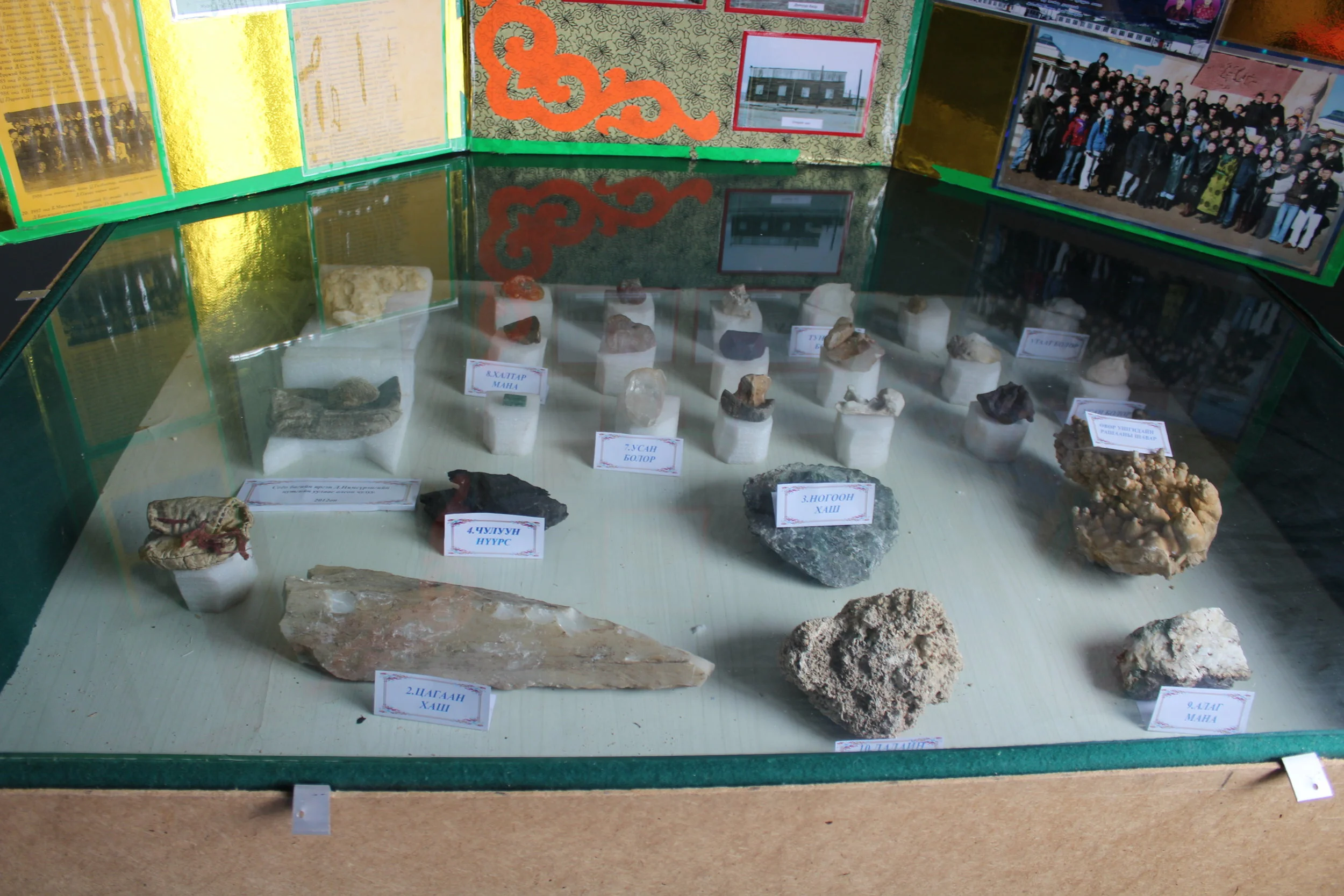Session III: Public Archaeology
Artifacts disturbed by bridge construction
NOMAD Science works with local museums to provide bi-lingual displays
Only 2 spots left!
Dates: July29-August 16, 2019
Fee: $2,900 USD (For support in applying for external funding, please contact us.)
Skills: archaeological survey; drones and GIS; basic artifact cataloging and conservation; public interaction and archaeotourism
Logistics: We will use nearby ger camp facilities in Hatgal. All meals will be provided by project staff. Small shops are present in Hatgal, but supplies are limited.
Description: On the south end of the village of Hatgal, Huvsgol, Mongolia, the headwaters of the Eg River, the only outflow of Huvsgul Nuur, can be found. Today, there is a bridge at this location that allows passage between east and west sides of the lake and river. This bridge was recently improved and rebuilt causing some disruption of the ground here exposing an artifact rich, stratified archaeological site that appears to span from the Neolithic (approximately 7,000 years ago) to recent historic periods. While portions of the site have been heavily disturbed by construction and looting activities, others remain intact. Without some intervention, the condition of the site will continue to deteriorate through erosion and continued looting. However, it is an unlikely candidate for excavation by most archaeologists because it is so highly visible to the public who are highly likely to disrupt their research. Thousands of foreign and domestic tourists visit Hatgal/Huvsgul Nuur, one of the most popular tourist destinations in Mongolia, annually. With the recent completion of a paved road all the way from Ulaanbaatar to Hatgal, this number has increased even more and will likely continue to rise. Though this is not the ideal situation for most traditional academic archaeological research projects, for those wishing to engage and educate the public in archaeology and cultural heritage, the location could not be better. No houses, businesses or other structures other than the bridge are located in the immediate vicinity, yet it is a short drive or walk (1 km) to the site from the village of Hatgal.
Paving the roads has greatly increased the accessibility of the region
While the field of archaeology has been making incredible theoretical and methodological advances in recent years, too often the public is left out of this discourse. Archaeologists almost exclusively use complex, jargon-laden language to communicate to other researchers and specialists at professional conferences and in peer-reviewed academic journals – members of the general public can neither access nor understand this content. Museums are typically given the task of providing the link between researchers’ findings and the public. Though this is an excellent and needed outlet, it should not be the only one. It can take years of planning and curation to prepare exhibits for display to the public. Furthermore, museum displays are not reflective of the realities of fieldwork – often highlighting only the most magnificent finds and not reflecting the obstacles and joys of discovery in the field. Archaeology is a field that has captured the public’s romantic imagination, and so it is rather unfortunate the archaeologists rarely capitalize on this interest. These individuals can also be powerful allies in protecting cultural heritage resources in their communities when the archaeologists have packed up and gone home.



